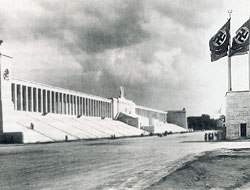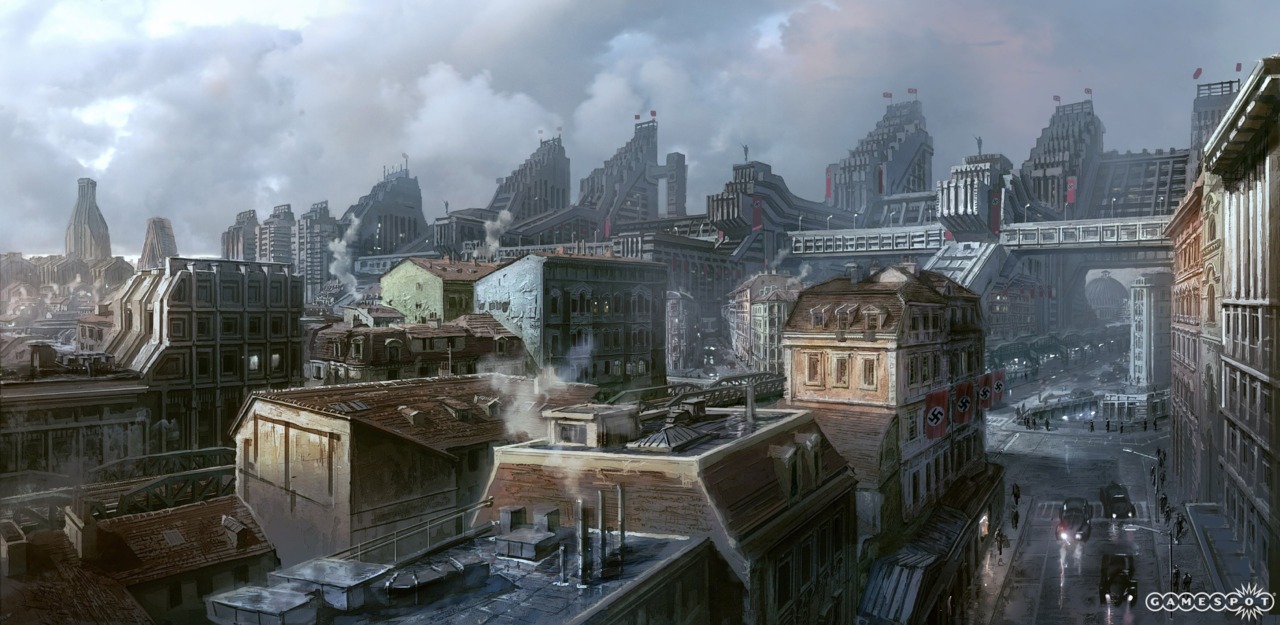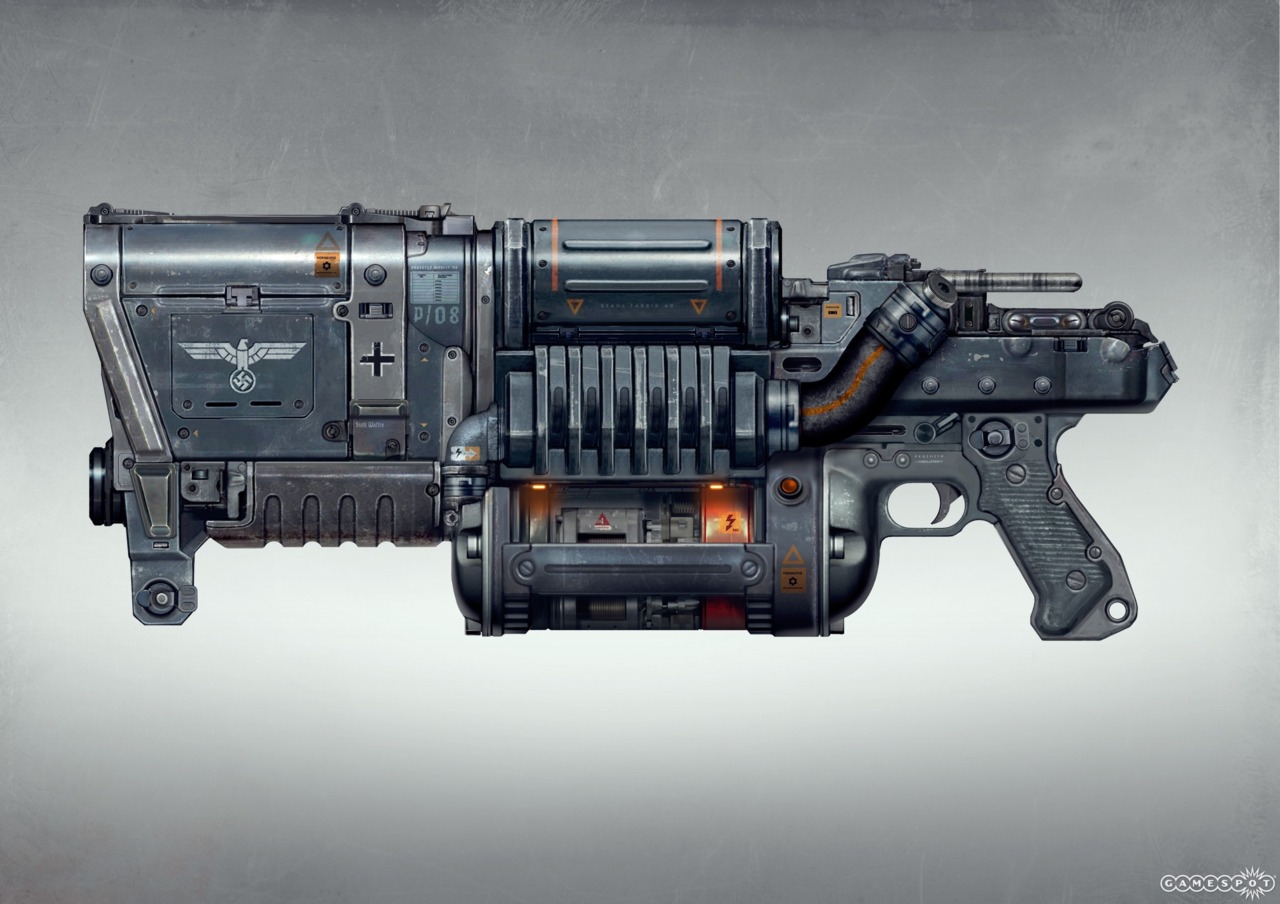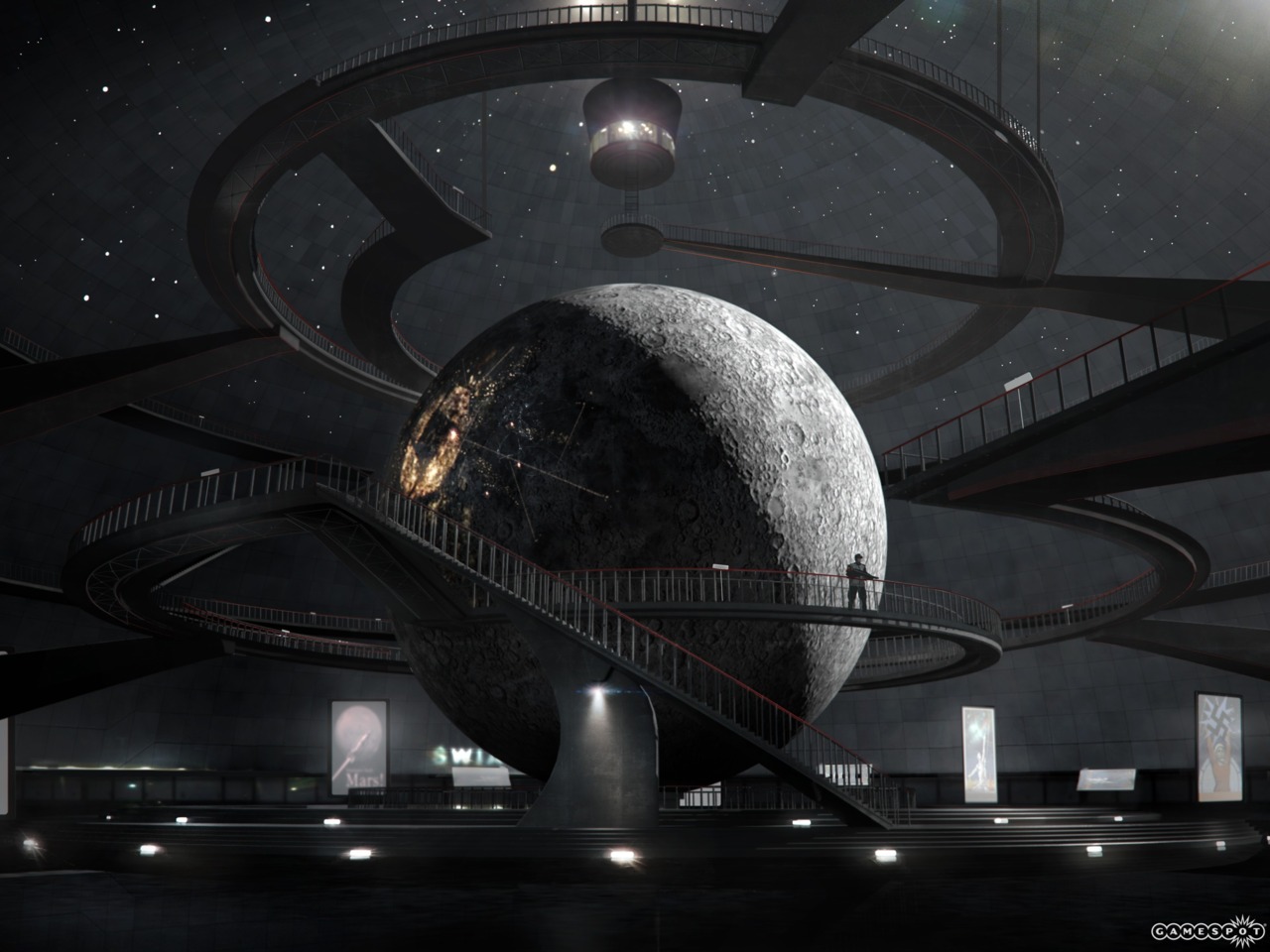Pondering the Potential of Wolfenstein's Alternate History
We speculate on various aspects of Wolfenstein: The New Order's alternate- history setting. What do you think the Nazi-controlled 1960s have in store?
After seeing the announcement trailer for Wolfenstein: The New Order, listening to developer interviews, and reading about the first gameplay demo, you may be left with some questions. And if you're anything like us, a lot of those questions revolve around the alternate-history world of the Nazi-ruled 1960s. Changing the course of history is an exciting opportunity for the developers at MachineGames, not only because they can flex their creativity, but also because comparisons to the real 1960s will automatically imbue any contrasts with a sense of dramatic intrigue.
This creative freedom raises a lot of questions. What will society be like? Will cars look different? How has (insert any non-European country here) fared? What kinds of pants are in style? It's easy to run wild with speculation, but let's focus on a few keys areas and put our imaginations to work.
What will cities look like?
 The Nazis had a particular passion for remaking the world in their own image. Adolf Hitler admired the ancient Greeks and the Roman Empire and believed that by emulating their architecture, he could spur a cultural rebirth in Germany that would contribute to the flourishing of the Third Reich. The image to the right is a grandstand for the Nazi party rally grounds in Nuremberg, designed by prominent Nazi architect Albert Speer.
The Nazis had a particular passion for remaking the world in their own image. Adolf Hitler admired the ancient Greeks and the Roman Empire and believed that by emulating their architecture, he could spur a cultural rebirth in Germany that would contribute to the flourishing of the Third Reich. The image to the right is a grandstand for the Nazi party rally grounds in Nuremberg, designed by prominent Nazi architect Albert Speer.
The broad stairs draw the eye up to the main level, where rows of columns frame any individuals or icons in dramatic fashion. The columns continue the upward momentum, reaching up to the heavens and giving the whole structure a vaulting, stately appearance. Now compare that image to the concept art for The New Order below.
The same upward thrust is readily apparent in the sprawling Nazi installation that looms over an old city. The architecture draws your attention up even as the edifice straddles existing infrastructure. The message of dominance is clear, and the scale and building materials make it look like a metaphorical tidal wave of progress ready to wash over the city.
This kind of ambitious construction is also present in
How futuristic will the weapons be?
As described in our previous coverage, the weapons shown in the demo were souped-up versions of familiar firearms. Pistols, submachine guns, and shotguns formed the base arsenal, and though they felt more powerful than and distinct from other virtual representations of these weapons, they were still solidly grounded in reality. The high-powered laser weapon pictured below, however, was a different story.
Liberated from a Nazi research lab by the enterprising B.J. Blazkowicz, this bad boy's primary fire vaporized human targets into a bloody mist. The alternate fire was a cutting laser, used to bypass obstacles and access shortcuts. MachineGames wasn't specific about what kind of technological leap fueled the development of this weapon, but it seems safe to say that lasers won't be the most outlandish weapon B.J. gets his hands on. One of the hulking mech enemies, for example, seemed to have an energy weapon that could fling people across a room. What types of weapons do you think are in the realm of possibility for The New Order's futuristic, yet somewhat grounded, approach? What outlandish firearms would you love to wield?
What will the cultural vibe be?
The 1960s saw a surge of counterculture movements and social revolutions. Civil rights demonstrations, antiwar protests, and the decolonization of African nations changed the political landscape of the world, while a cultural blossoming gave us a dizzying array of influential artists, including The Beatles, The Rolling Stones, Bob Dylan, and, as featured in the trailer, The Jimi Hendrix Experience.
Now ask yourself: how many of these cultural phenomena would thrive under the authoritarian rule of the Third Reich? The obvious answer seems to be "none," but MachineGames doesn't want to ignore the societal momentum that culminated in a decade of change. So what do the Swinging Sixties look like with swastikas plastered everywhere? Will we hear some BioShock Infinite-esque cover versions of popular songs, rearranged to fit the Nazis' cultural restrictions? And how will political upheaval look under the boot of the Nazi regime?
Are there Nazis on the moon?!
The concept art image below is taken from the demo we played. Inside the London Nautica, the Nazis have a museum devoted to their first lunar landing, something B.J. learns about to his chagrin. But a closer look at this image reveals that he may have a lot more to be mad about.
The bright lights, the long strings of light joined at rigid angles, the clear patterns… What else could that indicate but a Nazi moon colony? If their tech allowed them to reach the moon at least a decade earlier than Neil Armstrong did, perhaps it also enabled them to build installations and set up a self-sustaining city. It's an intriguing development, because if it's true, it's highly likely B.J. is going to end up on the moon at some point. But if you think about what the purpose of this installation might be, the idea takes a dark turn.
For all its barren, ethereal beauty, the moon's surface is not a great place to live. It's unlikely that Aryans would choose to move there, given that they are basically running all of Europe. That means the colony is probably a strategic base. Maybe it's weaponized, like a giant gun pointed at Earth's head, or maybe it's a base for launching missions to Mars and beyond (you can see Mars mentioned in a poster in the background). Either way, all those lights require a lot of human-powered upkeep (even if said humans have plenty of robots to help), and the Nazis proved themselves gruesomely effective at rounding up lots of people and transporting them places. What if that brightly lit outpost is a penal colony for people whose race, religion, or sexual orientation are demonized by the Nazis? It's a grim prospect, but a world dominated by Nazis would be a grim reality.
Join the conversation below and speculate with us on these questions and more. Alternate-history settings are fertile ground for creativity; it's time to plant some ideas of your own!
'Got a news tip or want to contact us directly? Email news@gamespot.com



Join the conversation